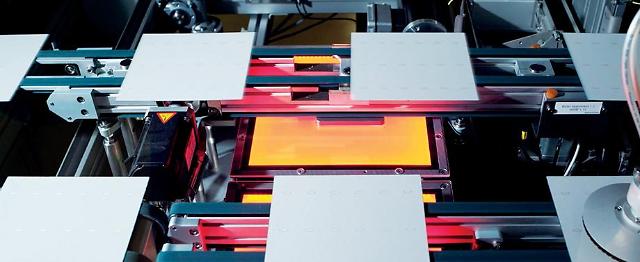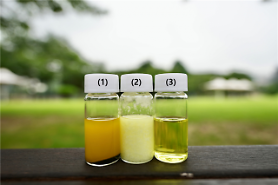
[Courtesy of Hanwha Q Cells]
SEOUL -- Hanwha Q Cells, the solar cell-making wing of South Korea's Hanwha Group, joined a European Union project to test produce perovskite silicon tandem solar cells. The goal is to develop technologies for the mass production of high-efficiency tandem cells for four years by 2026 and develop equipment, processes, and materials that manufacture tandem cell-based modules.
With an EU fund of 15 million euros ($15.6 million), the tandem cell test production line will be built at Hanwha Q Cells' research and development center in Thalheim, Germany. The project involving a total of 17 companies and research institutes is aimed at realizing the goal of converting renewable energy through the commercialization of high-efficiency tandem cells in line with an EU initiative to increase the proportion of renewable energy from 32 percent in 2022 to 45 percent in 2030.
Based on the results of research in Thalheim, Hanwha Q Cells aims to mass-produce tandem cells after June 2026. In March, the company worked with the Helmholtz Association of German Research Centres to develop tandem cells with an efficiency of up to 28.7 percent.
"Hanwha Q Cells is working with leading domestic and foreign institutions to accelerate the commercialization of tandem cells," CEO Lee Koo-yung said in a statement on November 24. "We will continue to lead technological innovation in the next-generation solar power market through two-track R&D based in Europe and South Korea."
A perovskite solar cell includes a perovskite-structured compound as the light-harvesting active layer. Perovskite solar cells enable ultrathin films to absorb the complete visible solar spectrum, leading to the creation of low-cost, efficient, thin and flexible modules. Unlike silicon solar cells, which are restricted from installation locations, perovskite solar cells can be installed on the exterior walls of buildings or on the sunroof of vehicles.
South Korean companies and researchers have tried to develop new technologies such as tandem cells that build perovskite on top of silicon solar cells. Tandem solar cells can be individual cells or connected in series, which are simpler to fabricate but the current is the same through each cell. A domestic consortium led by Hanwha Q Cells has been involved in the development of perovskite crystalline silicon cells by using tandem cell technology.
Copyright ⓒ Aju Press All rights reserved.



